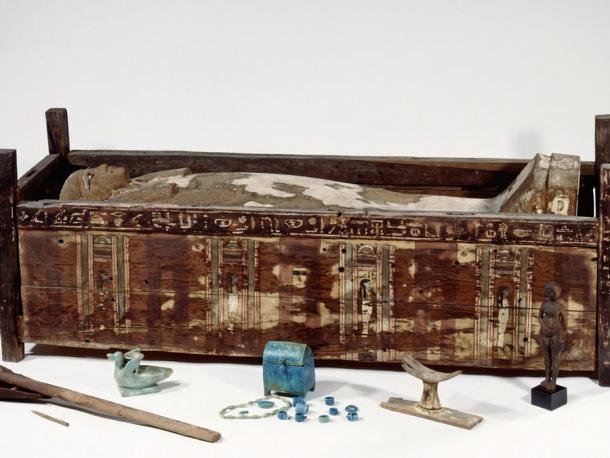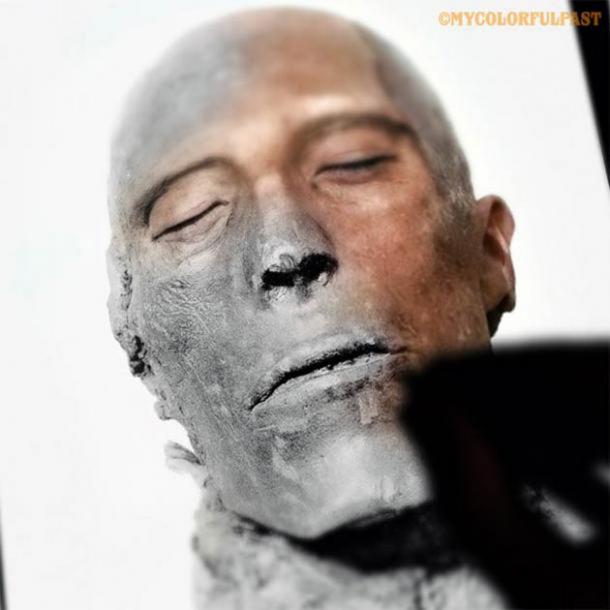You can now see what three Egyptian men living more than 2000 years ago in the ancient Egyptian city of Abusir el-Meleq really looked like thanks to forensic DNA phenotyping and other advance forensic methods. The reconstructed mummy faces were partially recreated using ancient DNA samples taken from the mummies of the three men who died between 1380 BC and AD 450.

DNA phenotyping, a modern forensic technique, was used by Parabon NanoLabs, an American company called, to create three dimensional images of the mummies’ faces. Parabon NanoLabs has routinely used the DNA phenotyping forensic technique to solve modern crime cases. So far, this advanced facial reconstruction technique has helped the company solve nine cold cases.
The DNA samples from the mummies were sequenced by scientists from the Max Planck Institute for the Science of Human History in Tübingen, Germany in 2017. This was the first time DNA samples were successfully extracted from mummies. Scientists had until then believed that DNA from Egyptian mummies was unlikely to have survived the extreme heat conditions, the humidity in the tombs, and the chemicals used for preservation. “Which are all factors that make it hard for DNA to survive for such a long time,” said study co-author Stephan Schiffels, as reported in the Smithsonian Magazine.

Reconstructed Mummy Faces: A Stunning Forensic Breakthrough!
To reconstruct the ancient Egyptian men’s faces, a DNA phenotyping method called Snapshot was used. This method predicts physical characteristics such as color of skin, hair and eyes of the individuals from whom DNA is taken based on their genetic markers. However, the process has limitations.
Facial Reconstruction Brings People Face-to-Face With Their Ancient Ancestors
Forensic Scientists in Greece Have Recreated the Face of a 9,000-Year-Old Female Teenager
The Parabon NanoLabs team also used detailed physical examinations of the mummy remains to fill in the other characteristics of the men’s faces. The physical skulls of the mummies were used to generate 3D meshes of the physical features of the three men. And then heat maps were created to highlight the differences between them.
Finally, a Parabon NanoLabs forensic artist combined the 3D-mesh details with the Snapshot predictions about skin, hair and eye color to rebuild the three faces, and the results were amazing!

Ancient Egyptians Resembled Modern Middle Eastern People
Interestingly, the three young ancient Egyptian faces brought alive by the Parabon NanoLabs techniques, showed greater similarity to modern Mediterranean and Middle Eastern populations than to modern Egyptians. This suggests that the mummified men had light brown skin, dark hair and brown eyes.
According to the Smithsonian Magazine, the statement released by the study team along with the images of the faces says that this is compatible with the results of the earlier genome analysis that “ancient Egyptians shared more ancestry with Near Easterners than present-day Egyptians, who received additional sub-Saharan admixture in more recent times.”
According to the Smithsonian Magazine article, in 2017, Johannes Krause, a palaeo-geneticist at the University of Tübingen in Germany, who was a member of the earlier genome study, said that it showed “complete genetic continuity” across 1300 years. This means that although ancient Egypt was invaded several times, the local populace didn’t intermix with the conquerors as much as previously believed.

Very Little Ancient DNA Can Still Be Very Useful!
In an email to Live Science, Ellen Greytak, Parabon NanoLabs’ director of bioinformatics, talked about the difficulties faced by the study team in working with ancient DNA. She said that such DNA is usually highly degraded and compromised with bacterial DNA. This means there is very little DNA available to sequence. However, because all humans share the vast majority of DNA, scientists actually don’t need the entire genome to “visualize” a long-dead person’s physical likeness.
Facing the Facts: Just How Accurate Are Facial Reconstructions?
Face of Notorious “Witch” Digitally Reconstructed 300 Years after her Death
They only need to study certain specific spots in the genome known as single nucleotide polymorphisms (SNPs) that differ between people. Where ancient DNA doesn’t provide enough SNPs to discern a certain characteristic, absent genetic data can be deduced from other nearby SNPs, Janet Cady, a Parabon NanoLabs’ bioinformatics scientist, told Live Science.
Each SNP is so closely associated with its neighbors that scientists can quite reliably predict what the missing SNP was. This new study is proof once again of how much can be revealed about ancient peoples from their DNA samples. Clearly DNA sequencing is an invaluable addition to the tools of historical facial reconstruction, as the three reconstructed mummy faces reveals.
Top Image: The three reconstructed mummy faces taken from 3 ancient Egyptian mummies. Source: Parabon NanoLabs
By Sahir Pandey



